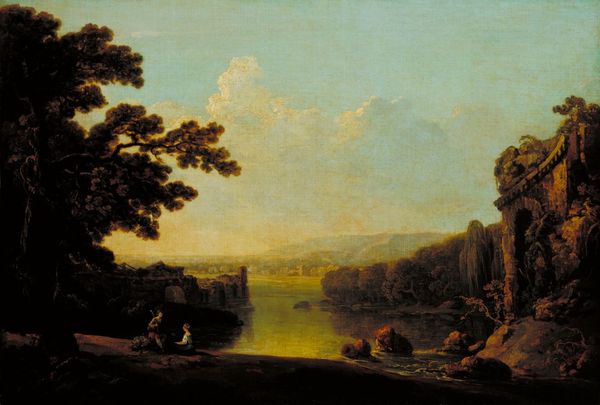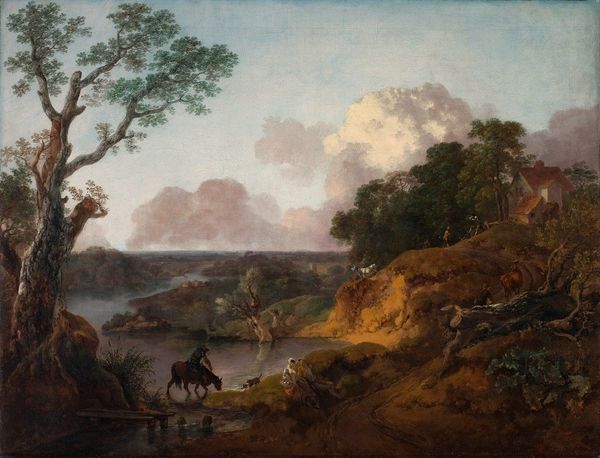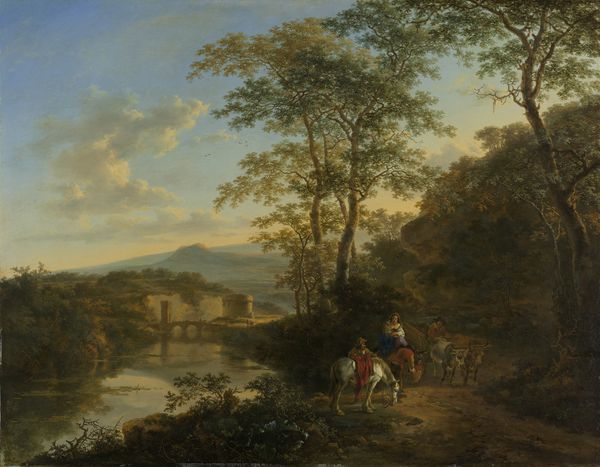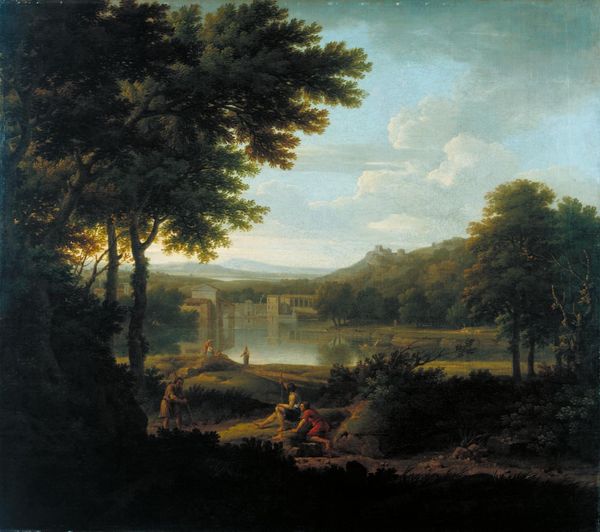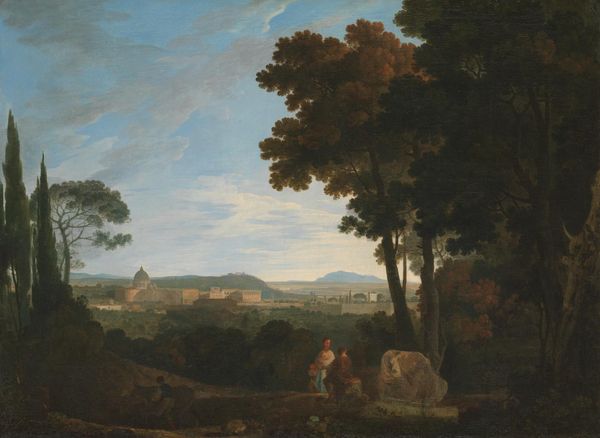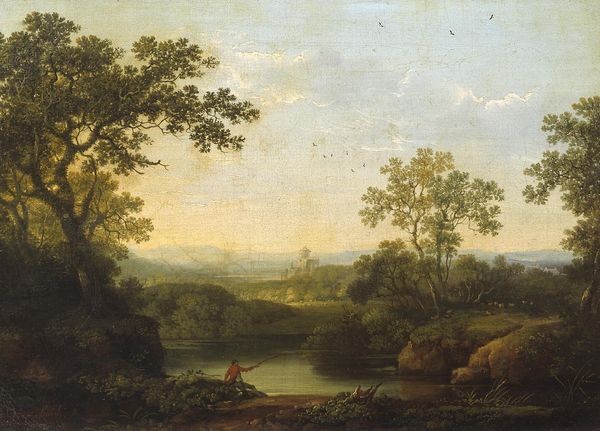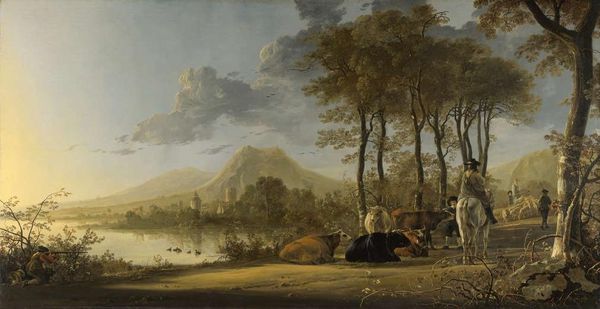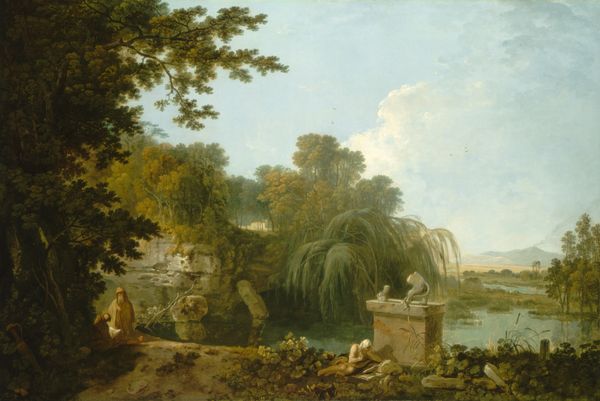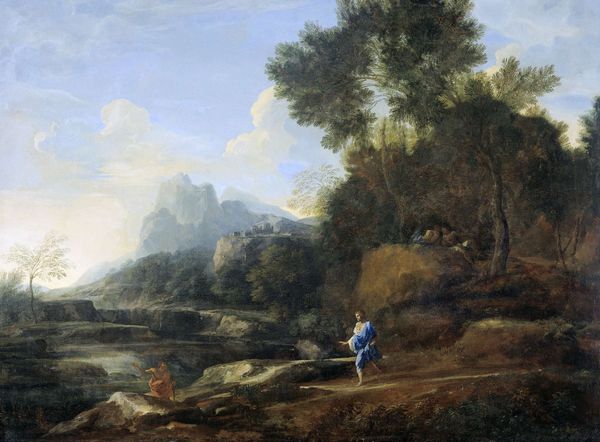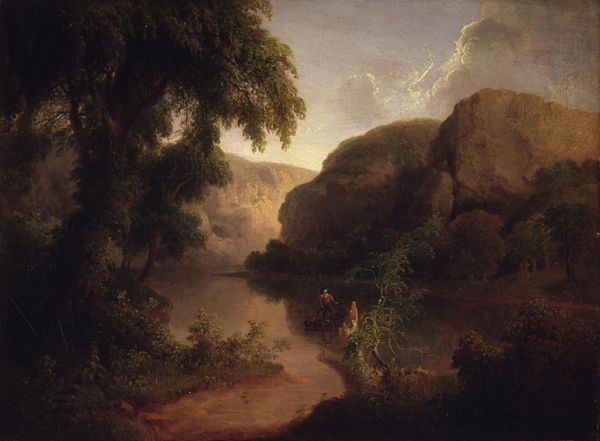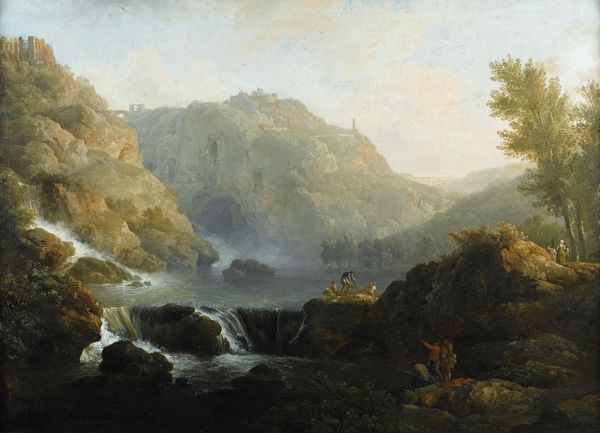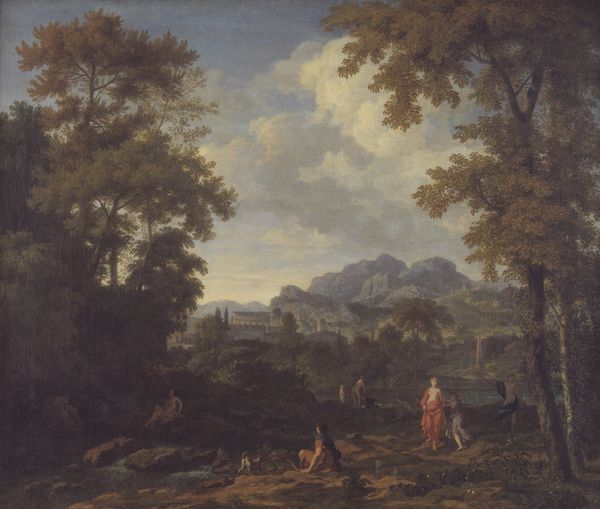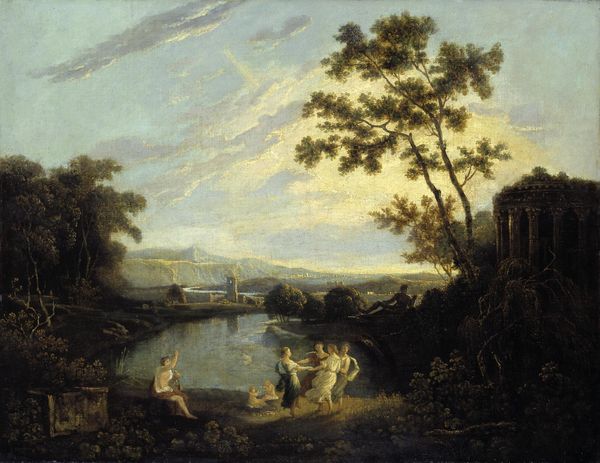
Dimensions: support: 584 x 749 mm frame: 880 x 1050 x 155 mm
Copyright: CC-BY-NC-ND 4.0 DEED, Photo: Tate
Curator: Richard Wilson’s “Landscape with Bathers, Cattle and Ruin” presents an idyllic scene. Its dimensions are roughly 58 x 75 cm. What strikes you about it? Editor: The light! That golden hour glow softens everything. It almost romanticizes the ruin in the background and gives a peaceful air to the bathing figures. Curator: Wilson was heavily influenced by Claude Lorrain and sought to elevate landscape painting, blending it with classical and pastoral themes which were very popular during his time. Editor: Yes, the composition certainly guides the eye. Note how Wilson employs the trees as framing devices, their branches gently arcing to draw attention to the distant ruin and those luminous clouds. Curator: This echoes a broader cultural interest in the picturesque, where idealized nature served as a reflection of social harmony and England’s place in the world. Editor: I see it—a crafted harmony. It’s more than just a visual experience; it's almost a constructed vision of an ideal world. Curator: Indeed. And the cattle drinking peacefully in the stream…a subtle nod to agrarian virtue. Editor: Thank you. Considering that, the golden light now reads as more than just aesthetic choice, it now seems a metaphor for a golden age.
Comments
tate 7 months ago
⋮
http://www.tate.org.uk/art/artworks/wilson-landscape-with-bathers-cattle-and-ruin-n01290
Join the conversation
Join millions of artists and users on Artera today and experience the ultimate creative platform.
tate 7 months ago
⋮
This composition is one of numerous idealised landscapes by Wilson based on the scenery he had observed in Italy in the 1750s. The arrangement of classical buildings in an imaginary setting was a device Wilson had learnt from Claude. Unlike the earlier master, however, Wilson tended to include ancient buildings that were no longer intact, thereby evoking a sense of time past. The domed ruin in the centre of this view is derived from a building just outside Rome, known in the eighteenth century as the Temple of Minerva Medica. The nude bathers in the foreground, with their overtones of Greek sculpture, are likewise a way of suggesting antiquity. Gallery label, August 2004
